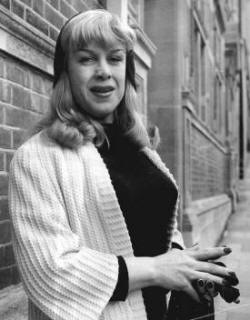

Queer Places:
84 Park Ln, Croydon CR0 1JX, UK
 Roberta
Elizabeth Marshall Cowell (8 April 1918[1]
– 11 October 2011) was a racing driver and Second World War fighter pilot. She
was the first known British trans woman to undergo sex reassignment surgery.[2]
Roberta
Elizabeth Marshall Cowell (8 April 1918[1]
– 11 October 2011) was a racing driver and Second World War fighter pilot. She
was the first known British trans woman to undergo sex reassignment surgery.[2]
By 1950, Cowell was taking large doses of estrogen, but was still living as a man.[23] She had become acquainted with Michael Dillon, a physician who was the first British trans man, after reading his 1946 volume Self: A Study in Endocrinology and Ethics. This work proposed that individuals should have the right to change gender, to have the kind of body they desired.[23] The two developed a close friendship. Dillon subsequently carried out an inguinal orchiectomy on Cowell. Secrecy was necessary for this as the procedure was then illegal in the United Kingdom and no surgeon would agree to perform it openly.
Cowell then presented herself to a private Harley Street gynaecologist and was able to obtain from him a document stating she was intersex. This allowed her to have a new birth certificate issued, with her recorded sex changed to female.[24] She had a vaginoplasty on 15 May 1951. The operation was carried out by Sir Harold Gillies, widely considered the father of plastic surgery,[25] with the assistance of American surgeon Ralph Millard. Gillies had operated on Michael Dillon, but vaginoplasty was then an entirely novel procedure, which Gillies had only performed experimentally on a cadaver.
By 1954, her two business ventures, a racing car engineering company (Leacroft of Egham) and a clothing company had both ceased trading and her change of legal gender had made it impossible for her to continue Grand Prix motor racing.[26] However, in March 1954, news of her gender reassignment broke, gaining public interest around the world. In the United Kingdom, her story was published in the magazine Picture Post, and Cowell received a fee of around £8000 from the magazine.[27] Cowell's biography was published soon after this, earning a further £1500.
In the United States, the widespread sensation caused by the news stories about Christine Jorgensen in 1952 had introduced the American public to the concept of changing sex, and the press had continued to print a steady stream of stories about others who had done so, mostly male to female trans women.[28] Such reports tended to conflate the unrelated concepts of sexual orientation and gender identity, so transsexuality had become closely associated in the public mind with male homosexuality (during this period, highly taboo) and effeminacy amongst men. Cowell's story consequently appeared confusing as it disrupted this narrative. Her marriage, her parenting of children, her wartime combat service and her association with motor racing were, during this period, perceived as strong markers of heterosexual masculinity; these aspects of her life were described repeatedly in press reports.[29]
She continued to be active in motor racing and attracted some publicity for winning the 1957 Shelsley Walsh Speed Hill Climb. In November 1958, she acquired an ex-RAF de Havilland Mosquito (number TK-655, civil registration G-AOSS).[30] Her intention was to use the aircraft for a record-breaking flight over the South Atlantic.[31] However, the project fell through due to a lack of suitable engines[31] and in 1958 she became bankrupt[32] with debts totaling £12,580 (approximately £269,700 in 2016).[26] By 1959, G-AOSS was a derelict hulk[33] and its remains were scrapped in 1960.[31]
Her financial difficulties continued, as she found it difficult to get employment.[34] In later years, she largely dropped out of the public eye. However she was still an active figure in British motor racing in the 1970s.[8] She also continued flying and by this time had logged over 1600 hours as a pilot.[35]
A brief interview with Sunday Times journalist Michael Bateman appeared in March 1972, when she was working on an (unpublished) second biography.[35] In the interview, she stated she was an intersex individual with the chromosomal abnormality XX male syndrome, and that the condition justified her transition.[Note 8] She also spoke in derogatory terms of those individuals with XY chromosomes who also underwent male to female gender reassignment, saying "The people who have followed me have often been those with male chromosomes, XY. So they've been normal people who've turned themselves into freaks by means of the operation."[35]
In the 1990s, Cowell moved into sheltered accommodation in Hampton, London although she continued to own and drive large, powerful cars. She died on 11 October 2011. Her funeral was attended by only six people and (on her instructions) was unpublicised – her death was not publicly reported until two years later, when a profile of her was printed in The Independent newspaper in October 2013.[2]
My published books: